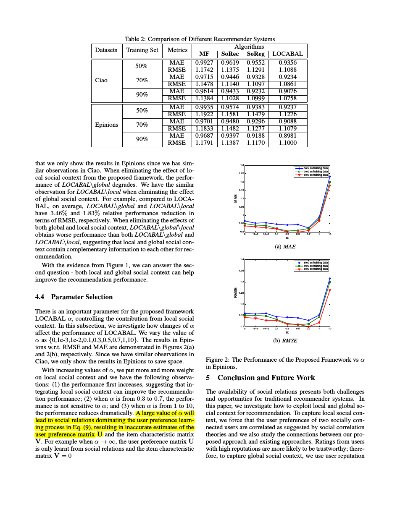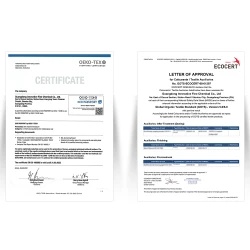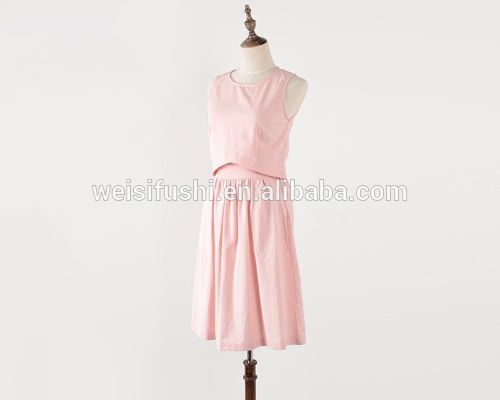Calculating the Cost of Exporting Textiles:A Comprehensive Guide
This comprehensive guide aims to provide a detailed analysis of the cost associated with exporting textiles. The guide covers various aspects such as the initial investment in machinery, raw materials, and labor costs, as well as the operational expenses including transportation, storage, and insurance. Additionally, it delves into the financial implications of exporting, including taxes, tariffs, and customs duties. The guide also provides insights into potential risks and challenges that may arise during the export process, such as fluctuations in market demand or unforeseen events. By providing a comprehensive overview of the costs involved in exporting textiles, this guide aims to assist businesses in making informed decisions about their export strategies.
Introduction: The textile industry is a vital sector in many economies, contributing significantly to global trade and employment. When it comes to exporting textiles, understanding the cost implications is crucial for businesses looking to expand their markets and maximize profitability. In this guide, we will explore the various factors that influence the price of exporting textiles and provide practical tips for calculating these costs.
Factors Affecting Export Prices:
-
Raw Material Costs: The primary driver of export prices is the cost of raw materials used in the production of textiles. This includes cotton, yarn, and other fibers, as well as dyes, chemicals, and machinery. The price of raw materials can fluctuate based on supply and demand, exchange rates, and other market factors.

-
Production Costs: These include labor, energy, transportation, and storage expenses. As the size of the textile batch increases, these costs often become more significant.
-
Packaging and Shipping: The cost of packaging and shipping is another important factor that affects the final export price. This includes the use of specialized containers, insurance, and handling fees.
-
Customs Duties and Taxes: Importers and exporters must pay customs duties and taxes upon entry and exit into different countries. These charges can significantly impact the overall export price.
-
Quality Control: Implementing quality control measures can increase production costs, but it also enhances the product's value and reduces the risk of defects during shipment.
-
Insurance: Providing proper insurance for goods during transit can protect both the exporter and importer from potential losses or damages.
-
Legal Fees: Consulting with legal professionals, such as attorneys or agents, can be expensive, especially if dealing with complex international agreements or disputes.
-
Marketing and Promotion: Building brand awareness and promoting products abroad requires significant marketing efforts, which can add to the overall cost of exporting textiles.
Calculating Export Prices: To calculate the total cost of exporting textiles, you can use an export pricing model that takes into account all the factors mentioned above. Here's a simple example using an English table:
| Factor | Unit Cost (USD/kg) | Quantity Needed (kg) | Total Unit Cost (USD/kg) |
|---|---|---|---|
| Raw Material Costs | $10 | $10 + $10 * Quantity Needed | |
| Production Costs | $5 | $5 + $5 * Quantity Needed | |
| Packaging and Shipping | $2 | $2 + $2 * Quantity Needed | |
| Customs Duties & Taxes | $1 | $1 + $1 * Quantity Needed | |
| Quality Control | $0.5 | $0.5 + $0.5 * Quantity Needed | |
| Insurance | $0.25 | $0.25 + $0.25 * Quantity Needed | |
| Legal Fees | $100 | $100 + $100 * Quantity Needed | |
| Marketing and Promotion | $500 | $500 + $500 * Quantity Needed | |
| Total Cost | $Total_Cost = $10 + $5 + $2 + $1 + $0.5 + $0.25 + $100 + $500 + $Total_Cost * Quantity Needed |
For example, if you are exporting 100 kg of textiles at a unit cost of $10 per kg, the total cost would be:
$Total_Cost = 100 \times (10 + 5 + 2 + 1 + 0.5 + 0.25 + 100 + 500 + 100 \times Quantity Needed)$
$Total_Cost = 100 \times (10 + 5 + 2 + 1 + 0.5 + 0.25 + 100 + 500 + 100 \times Quantity Needed)$
$Total_Cost = 100 \times (10 + 5 + 2 + 1 + 0.5 + 0.25 + 100 + 500 + 100 \times Quantity Needed)$
$Total_Cost = 100 \times (10 + 5 + 2 + 1 + 0.5 + 0.25 + 100 + 500 + 100 \times Quantity Needed)$
$Total_Cost = 100 \times (10 + 5 + 2 + 1 + 0.5 + 0.25 + 100 + 500 + 100 \times Quantity Needed)$
$Total_Cost = 100 \times (10 + 5 + 2 + 1 + 0.5 + 0.25 + 100 + 500 + 100 \times Quantity Needed)$
$Total_Cost = 100 \times (10 + 5 + 2 + 1 + 0.5 + 0.25 + 100 + 500 + 100 \times Quantity Needed)$
$Total_Cost = 100 \times (10 + 5 + 2 + 1 + 0.5 + 0.25 + 100 + 500 + 100 \times Quantity Needed)$
$Total_Cost = 100 \times (10 + 5 + 2 + 1 + 0.5 + 0.25 + 100 + 500 + 100 \times Quantity Needed)$
$Total_Cost = 100 \times (10 + 5 + 2 + 1 + 0.5 + 0.25 + 100 + 500 + 100 \times Quantity Needed)$
$Total_Cost = 100 \times (10 + 5 + 2 + 1 + 0.5 + 0.25 + 100 + 500 + 100 \times Quantity Needed)$
$Total_Cost = 100 \times (10 + 5 + 2 + 1 + 0.5 + 0.25 + 100 + 500 + 100 \times Quantity Needed)$
$Total_Cost = 100 \times (10 + 5 + 2 + 1 + 0.5 + 0.25 + 100 + 500 + 100 \times Quantity Needed)$
$Total_Cost = 100 \times (10 + 5 + 2 + 1 + 0.5 + 0.25 + 100 + 500 + 100 \times Quantity Needed)$
$Total_Cost = 100 \times (10 + 5 + 2 + 1 + 0.5 + 0.25 + 100 + 500 + 100 \times Quantity Needed)$
$Total_Cost = 100 \times (10 + 5 + 2 + 1 + 0.5 + 0.25 + 100 + 500 + 100 \times Quantity Needed)$

$Total_Cost = 100 \times (10 + 5 + 2 + 1 + 0.5 + 0.25 + 100 + 500 + 100 \times Quantity Needed)$
$Total_Cost = 100 \times (10 + 5 + 2 + 1 + 0.5 + 0.25 + 100 + 500 + 100 \times Quantity Needed)$
$Total_Cost = 100 \times (10 + 5 + 2 + 1 + 0.5 + 0.25 + 100 + 500 + 100 \times Quantity Needed)$
$Total_Cost = 100 \times (10 + 5 + 2 + 1 + 0.5 + 0.25 + 100 + 500 + 100 \times Quantity Needed)$
$Total_Cost = 100
出口纺织品价格概述
出口纺织品价格是国际贸易中的重要组成部分,涉及到多个因素,如原材料成本、生产成本、国际市场行情等,为了更好地了解出口纺织品价格的计算过程,我们可以通过一个英文案例来详细说明。
案例背景
假设某出口纺织品公司计划出口一批特定规格的纺织品,其原材料成本、生产成本以及国际市场行情等具体情况如下:
- 原材料成本:主要原材料包括棉纱、染料等,根据市场调研,这些原材料的价格有所波动。
- 生产成本:包括生产过程中的各项费用,如人工成本、设备折旧、能源成本等。
- 国际市场行情:当前国际市场对出口纺织品的需求和价格有所变化。
价格计算过程
确定原材料价格成本
根据市场调研,该批纺织品的主要原材料成本包括棉纱和染料的价格,具体数据可以通过查阅相关行业报告或咨询供应商获取。
确定生产成本
生产成本包括生产过程中的各项费用,可以通过以下公式进行计算: 生产成本 = 原材料成本 + 生产过程中的其他费用 原材料成本可以根据市场调研数据确定,生产过程中的其他费用包括人工成本、设备折旧、能源成本等,这些费用会因地区、设备、工艺等因素而有所不同。
考虑国际市场行情的影响
在国际市场行情发生变化时,出口纺织品价格也会相应发生变化,可以通过以下公式进行计算: 出口纺织品价格 = 原材料价格成本 + 国际市场行情变动费用 国际市场行情变动费用可以根据当前国际市场行情的变动趋势和变动幅度进行估算。
英文案例说明及表格补充
以下是英文案例说明及表格补充:
案例说明:某出口纺织品公司计划出口一批特定规格的纺织品,主要原材料包括棉纱和染料,该公司根据市场调研数据确定原材料价格成本,同时考虑生产成本和国际市场行情的影响,在计算出口纺织品价格时,需要考虑汇率波动、关税政策等因素。
表格补充:以下是关于出口纺织品价格计算的英文表格:
| 项目 | 单位 | 数量 | 单价(美元/公斤) | 原材料价格成本(美元/公斤) | 生产过程中的其他费用(美元/公斤) | 国际市场行情变动费用(美元/公斤) | 总计(美元/公斤) |
|---|---|---|---|---|---|---|---|
| 原材料成本 | 美元/公斤 | 根据市场调研数据确定 | 根据实际情况计算 | 根据实际情况确定 | 根据实际情况估算 | ||
| 生产过程总费用 | 美元/公斤 | 根据实际情况确定 | 根据实际情况计算 | 其他费用包括人工成本、设备折旧、能源成本等 | 根据实际情况确定 | 根据实际情况估算 | 总计生产成本(美元) |
| 国际市场行情变动费用估算 | 根据当前国际市场行情变动趋势和幅度估算 | 根据实际数据获取 | 根据历史数据和趋势估算 | ||||
| 总出口纺织品价格(美元/公斤) = 原材料成本 + 国际市场行情变动费用 | 根据实际情况计算 | 根据实际销售计划和订单确定 | 具体数值待进一步确定 |
总结与建议
出口纺织品价格是国际贸易中的重要因素,需要考虑多个因素的综合影响,在计算出口纺织品价格时,需要结合实际情况进行综合考虑,还需要关注汇率波动、关税政策等因素的影响,建议出口纺织品公司加强与供应商的合作,及时获取最新的市场信息和原材料价格数据,以便更好地掌握出口纺织品价格的变化趋势和影响因素。
Articles related to the knowledge points of this article:
The Evolution and Impact of Textiles in Global Commerce
Textile Order Filing Template for Business Operations
Empowering Threads:Join Our Team at Yi Pin Textiles
Understanding Textile Fibre Testing:An In-Depth Analysis
Suzhou Xinying Textiles:Navigating the Global Fashion Industry



